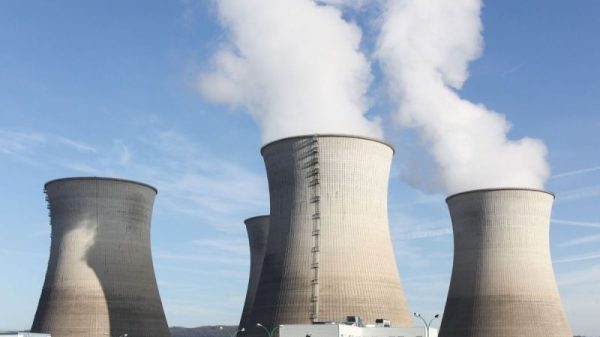A recent report from McKinsey highlights the critical role of commodities trading amid heightened uncertainty, particularly as new players that are driven by increased value pools and market opportunities enter the arena.
The report shows that despite global uncertainty, commodities trading generated over US$100 billion in earnings before interest and taxes in 2023, translating into more than US$150 billion in gross margin.
McKinsey mentions challenges related to COVID-19 and geopolitical conflicts, such as increased price volatility and supply chain disruptions, but notes that commodities trading value pools have show resilience.
Total trading values remained relatively stable in 2023, following rapid growth from 2021 to 2022.
Commodities trading trends in 2023
Looking at specific commodities, McKinsey notes that oil and oil-based products remain the largest value pool, although their profitability decreased in 2023. The firm also notes that the year brought physical volatility.
Total demand for oil is seen growing for the majority of this decade, followed by a decline after 2030. Demand for the commodity is forecasted to decrease by nearly 50 percent by 2050.
Until then, competition is anticipated to escalate as more large players enter the fray. According to McKinsey, national oil companies and legacy oil marketers are already bolstering their trading capabilities.
For power and gas, the trading pool value saw a bump in 2023, with markets seeing above-average volatility.
New opportunities are emerging in power and gas trading, particularly around entering new markets, data-driven trading and investments in new assets like battery energy storage systems.
The liquefied natural gas (LNG) market continued to grow in 2023, playing a crucial role in maintaining energy security in Europe. Similar to oil, market competition is poised to escalate as players that traditionally relied on long-term pipeline gas contracts, particularly in Europe, can now leverage their existing customer base to bolster their trading capabilities.
For metals and mining, trading profitability decreased in 2023, driven by elevated energy prices and lower commodity prices. Even so, nickel production notably saw an upsurge, largely driven by Indonesia, while lithium output experienced only modest growth. McKinsey sees the energy transition driving metals demand in the years to come.
Commodities sector increasingly interconnected
Aside from that, the McKinsey report highlights two major trends shaping commodities markets today.
The first is increasing interconnectedness. According to McKinsey, the average correlation between commodities vital to the energy transition has doubled, reaching 56 percent from 2015 to 2019.
Part of the reason for that is increased diversification of supply, which has led to a decrease in long-term relationships and a surge in short-term contracts. The LNG market exemplifies this shift, notes McKinsey, with approximately 100 new LNG tankers launched in the past three years, poised to surpass oil carriers by 2028.
Similarly, flexible contracts are gaining traction as buyers seek to mitigate risk. This shift often leads to higher exposure to global prices, as residual volumes are typically priced based on current market levels. Notably, the competition between Asia and Europe for additional LNG volumes highlights the growing preference for spot or indexed contracts.
However, not all markets follow this pattern. Critical commodities like agriculture and certain metals, where supply chain security is paramount, often enjoy protection from local authorities.
Power to play a key role in the energy transition
The second major trend McKinsey mentions is the growing role of power in the energy transition.
The firm notes that power will be key to meeting the net-zero goals outlined in the Paris Agreement, and states that the power sector’s value is anticipated to grow by up to 5 percent annually, reaching US$1.3 trillion to US$2.4 trillion by 2040.
However, the road to a sustainable energy future is not straightforward. Unlike other commodities, power demands immediate generation and consumption in close proximity. While solar and wind have spearheaded initial efforts in the energy transition, the journey to achieving the next 50 percent reduction in emissions presents complex hurdles.
Solutions such as nuclear, hydrogen and carbon capture necessitate substantial investments, alongside urgent grid expansions to accommodate evolving demands.
In Germany alone, the annual buildout of the transmission grid is projected to skyrocket by a factor of five, with approximately 1,900 kilometers added per annum by 2035, compared to a mere 400 kilometers previously.
Renewables, particularly wind and solar, are also set to dominate the power mix from 2030 to 2050. Yet this reliance on renewables introduces dependencies on other commodities. For instance, wind turbines, which are integral to renewable energy infrastructure, heavily rely on materials like steel, copper and aluminum.
Investor takeaway
As uncertainty drives large value pools in commodities trading, McKinsey is suggesting that players in this market embrace data-driven trading, which involves artificial intelligence.
The firm believes this approach can give commodities an advantage, particularly in power and gas.
‘To expand capabilities and agility, players will need to think through the macrotrends to determine which cross-commodity opportunities are the best fit, what role traders can play in power, and how to differentiate across managing illiquid risks, data-driven trading, and having deep capabilities in niche commodities,’ states McKinsey.
Securities Disclosure: I, Giann Liguid, hold no direct investment interest in any company mentioned in this article.







































